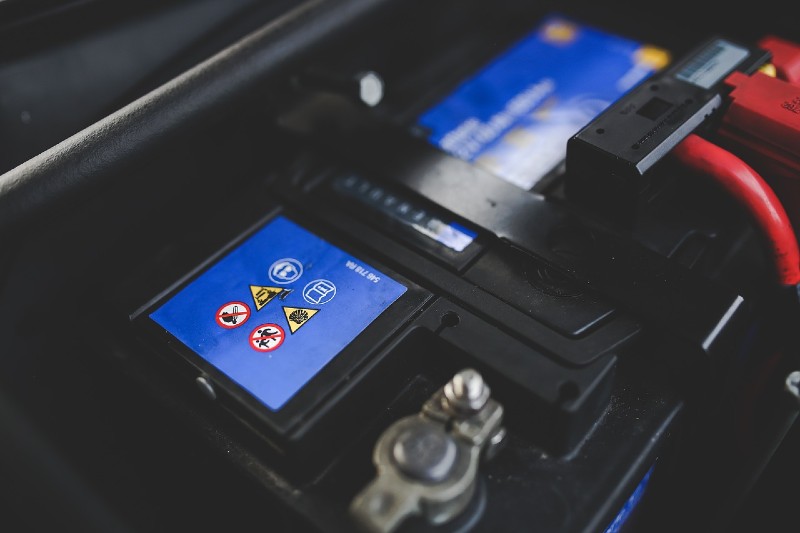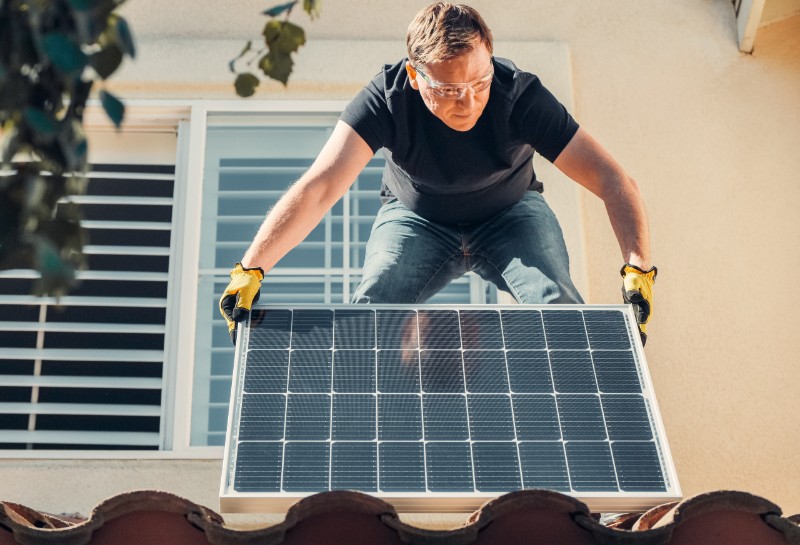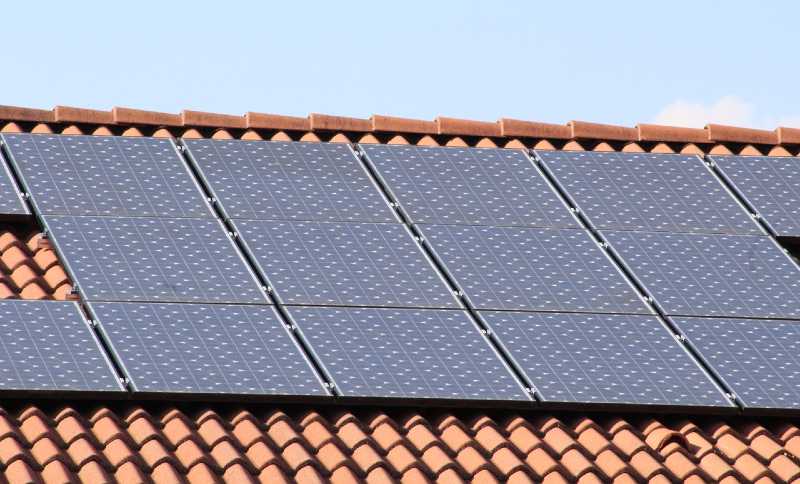Did you know that the average solar panel efficiency has increased from 15% to over 23% in the past decade?
This surge in efficiency highlights the potential to harness more solar energy than ever before.
However, maximizing solar panel output goes beyond just selecting high-efficiency models.
It involves strategic installation, regular maintenance, and utilizing advanced technologies.
So, in this article, I’ll walk you step by step through the key practices to enhance your solar panels’ performance.
Key Takeaways
- To increase the solar panel output, adopt high-efficiency panels, utilize Grade A monocrystalline cells, integrate CPV cells, and apply anti-reflection coatings.
- Maximize sunlight absorption by precisely aligning panels based on latitude, using solar trackers, and ensuring optimal orientation for enhanced solar capture.
- Maintain your solar system’s peak performance with routine cleaning, avoiding shading, and implementing regular preventive checks to avoid efficiency losses.
- Manage energy usage by spreading out appliance usage, incorporating backup batteries, and selecting high-quality inverters, ensuring a consistent power supply.
- Hire certified solar installers to optimize system configuration and performance, ensuring your solar setup operates at its best.
Do Solar Panels Lose Efficiency Over Time?
Solar panels do lose efficiency over time, a process known as degradation.
This happens because they’re constantly exposed to UV rays and have to withstand various weather conditions.
The National Renewable Energy Laboratory estimates that this degradation rate is about 0.5% to 0.8% each year, which means the amount of energy your panels can produce drops a little bit every year.
But here’s the good news: you can take steps to help your solar panels work their best and even outsmart some of that natural wear and tear.
By keeping up with the latest solar tech, making sure your panels are in the perfect spot, and looking after them with some regular maintenance, you can boost their efficiency.
What Are the Tips to Increase the Solar Panel Efficiency?
1. Select for High Efficiency Solar Panels
Solar panels come with special cells called photovoltaic cells that turn sunlight into electricity.
But, not all the sunlight that hits the panels can be turned into power.
So, when we talk about a panel’s efficiency, we’re talking about how much of that sunlight the panel can turn into electricity you can use.
Over the last few years, these solar panels’ efficiency has gone up from around 15% to 23%.
I usually recommend not getting less than 20% efficiency when choosing solar panels.
I also know that the price of high-efficiency panels can be a bit daunting at first glance.
But, believe me, the initial investment is worth it in the long run.
2. Opt for Grade A Monocrystalline Cells
Monocrystalline solar cells are created from a single, pure silicon crystal.
This purity allows electrons, which generate electricity, to move more freely and efficiently than other solar cell types.
In simpler terms, these cells are good at converting sunlight into electricity because there are fewer roadblocks for the electrons inside the cell.
When we talk about Grade A monocrystalline cells, we’re referring to the best quality in the market.
These top-tier cells also perform better even when the light isn’t ideal, like on cloudy days, and they’re more resistant to high temperatures.
I switched to Grade A monocrystalline panels for my home last year, and the results were impressive.
My energy production increased by about 25% compared to my previous polycrystalline panels, even during the shorter, cloudier winter days.
3. Incorporate High Concentrated Photovoltaic (CPV) Cells
High Concentrated Photovoltaic (CPV) cells use special lenses or mirrors to focus a lot of sunlight onto a small, super-efficient solar cell.
This means they can convert much more sunlight into electricity—up to 46% efficiency, which is way higher than the usual 20% you get from standard panels.
Now, there’s a catch.
CPV technology isn’t as common as regular solar panels.
They’re more complex and can be up to four times more expensive.
But, if you live in a place with lots of direct sunlight, the investment might make sense.
These cells can produce a lot more power, making them a great choice if you’re looking to get the most out of your system, even if it means spending more at the start.
4. Apply Anti-Reflection Coatings
Anti-reflection coatings are special layers that are added to help your panels grab more sunlight and turn it into electricity.
Without these coatings, you’re losing out—over 30% of sunlight just bounces right off the panels.
Now, here’s how these coatings work: they have this cool ability to mess with the light that’s reflected away, so instead, more light gets soaked up by the solar cells.
And here’s the kicker—by getting the cells to soak up more sun, these coatings ramp up how much energy your panel can crank out.
So, when you’re in the market for solar panels, make sure to ask if they come with anti-reflection coatings or have that textured surface thing going on.
5. Optimize Panel Orientation
Ideally, you need your panels to get the maximum amount of sunlight over a day.
In the Northern Hemisphere, this usually means facing them true south, while in the Southern Hemisphere, you’d aim for true north.
But it’s not just about the compass direction.
You need to think about the specific conditions of your location.
In some cases, if there’re environmental factors influence sunlight availability, you might need to adjust the orientation slightly from true south or north to capture the most sun.
6. Use Latitude-Based Angles for Installation
Latitude-based angles are all about aligning your solar panels just right, based on where you are in the world, to catch as much sunlight as possible.
Here’s how it works: If you’re at a latitude of 35 degrees, tilting your panels at a 35-degree angle is a great start.
This setup aligns your panels to catch a lot of sunlight during the equinoxes when the sun is over the equator.
But the sun’s path changes with the seasons, so you might need to tweak this angle a bit.
In winter, when the sun is lower in the sky, tilting your panels more steeply can help them catch more light.
In summer, when the sun is higher, a flatter angle works better.
7. Set up Your Panels to Track the Sun
Solar trackers help your panels move so they can always catch the best sunlight.
There are two types of solar trackers.
The single-axis trackers move your panels from east to west, just like the sun moves across the sky.
Then there are dual-axis trackers, which are even more advanced.
They not only move your panels from east to west but also tilt them up and down, adjusting to the sun’s height in the sky, which changes with the seasons.
Adding these trackers might seem like a big step because they can be pricey and need some extra setup.
But think of it as an upgrade that can make your solar panels much more effective, especially if you’re in a spot that doesn’t get constant direct sunlight.
Here’s how you’d go about it: plan out how to fit the trackers with your panels, then pick the right type of tracker, set everything up, and make sure it’s all connected correctly.
After installation, you’d test the trackers to see if they’re following the sun like they should.
8. Keep the Panels Clean
If you’re new to the solar world, this might come as a surprise, but keeping your solar panels clean is a big deal for their efficiency.
Just like a dirty window can block sunlight, anything that covers your panels — think dust, leaves, or bird droppings — can prevent them from soaking up the sun and doing their job properly.
Not keeping them clean can decrease their efficiency by 25% to 35%.
So, how often should you clean them?
It depends on where you live.
If you’re in an area that’s prone to dust or has a lot of air pollution, you’ll want to clean them more frequently.
A general rule is to give them a good clean at least once a year, but twice a year or even quarterly might be necessary in some environments.
Cleaning your solar panels isn’t rocket science.
Often, just spraying them down with a hose will do the trick.
But if they’re grimy, you might need to use a soft cloth or a non-abrasive sponge with some water.
Remember, it’s best to do this during the cooler parts of the day to avoid sudden temperature changes that could damage the panels.
If getting up on your roof isn’t your idea of a good time, or if your panels are hard to reach, you might hire a professional for this task.
9. Avoid Panel Shading
Shading to solar panels is like putting a blanket over a lamp; it drastically reduces the light output.
Even a small amount of shade on just one part of a solar panel can significantly decrease the energy production of the entire system.
This is because most solar panels are set up in series within a string, and shading on one panel can affect the performance of all the panels in that string.
So, if you’re about to install solar panels or already have them, make a quick assessment of your surroundings.
Consider not just the current state, but also how things might change.
Trees grow, new buildings could come up, and even added features to your property could introduce new shade risks.
If you find that your chosen spot might get some shade, think about possible solutions.
Could you trim the trees? Is there a better spot where you can install the panels?
Sometimes, a slight adjustment in the location can make a big difference in the long-term efficiency of your solar power system.
10. Use Reflective Surfaces (e.g. Mirrors)
Do you remember playing with a magnifying glass in science class, focusing sunlight on one spot?
Well, using mirrors with your solar panels is kind of like that.
You place mirrors around your panels to bounce some extra sunlight onto them.
This trick called a solar concentrator or reflector system, is like giving your panels a sunlight boost, helping them generate more energy.
This is especially useful if you live somewhere that doesn’t get constant sunshine or during parts of the year when the days are shorter.
But, just like you had to be careful not to burn anything with the magnifying glass, you’ve got to use the mirrors wisely.
If they focus too much light, they could overheat your panels or create a blinding glare, which could be dangerous for birds flying by or even pilots.
Thinking about trying this out?
It’s a good idea to hire a professional solar installer or a consultant who specializes in solar energy systems.
They can help you set up your mirrors the right way, so you get all the benefits without any downsides.
And don’t forget to check if there are any local rules about using mirrors like this.
11. Limit Simultaneous Device Usage
Sometimes, the answer to getting more out of your solar panels is pretty simple: just keep an eye on how much energy you’re using.
Think of your solar energy as a daily allowance.
If you use too many appliances at once, you’ll burn through your energy too quickly.
Here’s a tip: spread out when you use big energy-hungry appliances throughout the day.
Instead of running your dishwasher and washing machine at the same time, use them at different times.
And don’t forget those little things that can add up.
Like turning off lights in rooms you’re not using or unplugging chargers when you’re not charging anything.
I created a schedule to stagger the use of my appliances, like running the washing machine in the morning and the TV only in the evening.
Over a month, these simple adjustments reduced my energy consumption by about 15%, making my solar energy last longer each day.
12. Install Backup Batteries
Since solar panels only work when the sun is shining, adding backup batteries to your setup makes a whole lot of sense.
These batteries store any extra energy your panels produce during sunny times.
Then, when it’s cloudy or nighttime, you can use that stored energy instead of relying on the grid.
This way, you’re making the most of your solar power, day or night, sunny or cloudy.
And to get the best results, it’s smart to install your solar panels and batteries close to each other.
This reduces energy loss during transfer, making your system more efficient.
And if you’re thinking about getting solar panels, consider adding batteries right from the start.
I recommend lithium-ion batteries because they pack a lot of energy into a small space and are efficient, meaning they don’t waste much energy.
Plus, they last a long time, so you can rely on them to store and provide solar power whenever you need it, day or night.
13. Maximize Energy with the Right Inverter
Getting the most out of your solar panels doesn’t just end with the panels themselves; the inverter is key too.
This device converts the direct current (DC) electricity from the panels into alternating current (AC) electricity, which powers your home.
So, when you select a high-quality inverter, you ensure that this conversion process is as efficient as possible.
You’ll also need to do regular maintenance checks on your inverter to ensure it’s always running at peak efficiency.
This means monitoring its performance, keeping it clean, and getting professional checks when necessary.
14. Hire a Certified Solar Installer
Certified solar installers don’t just install your panels; they optimize your entire system for peak performance.
Here’s your action plan: start by researching local certified solar installers.
Look for someone with solid experience and great reviews.
Then, schedule a consultation.
They’ll assess your home’s solar potential, suggest the best setup, and even help you navigate any local permits or incentives.
By having a professional handle your installation, you’re ensuring that every component—from panels to inverters—is perfectly chosen and placed for maximum efficiency.
15. Conduct Regular Preventive Checks
Try to deal with your solar system like it’s a high-performance car; it needs regular check-ups to run smoothly.
During these check-ups, professional engineers will inspect every part of your system, from the panels to the connections, ensuring everything is in top shape.
This proactive approach helps spot small issues before they become big problems, keeping your system efficient.
In addition to professional checks, if you have an online monitoring system, use it.
It’s like having a dashboard that shows you how well your solar panels are performing every day.
If you notice the energy output dipping, you can quickly get to the bottom of it.
I like to do a quick daily glance at my monitoring system, just like I’d check my car’s fuel gauge before a long drive.
It gives me peace of mind knowing that everything is working as it should, and if it’s not, I can take immediate steps to address it.
FAQs
How Can I Make My Solar Panels More Powerful?
To make your solar panels more powerful, ensure they are clean and properly oriented, use high-efficiency panels, and consider using solar trackers or reflective surfaces
How Can I Increase the Current in My Solar Panel?
To increase the current in your solar panel, optimize the panel’s orientation, ensure maximum sunlight exposure, and use a maximum power point tracker (MPPT).
Do Mirrors Increase Solar Panel Output?
Mirrors can increase solar panel output by reflecting additional sunlight onto the panels, acting as solar concentrators.
But, you must use them carefully to avoid overheating or damaging the panels.
Can We Increase the Capacity of Solar Panels?
You can’t increase the capacity of an existing solar panel, but you can enhance the system capacity by adding more panels, optimizing the existing setup, or upgrading to more efficient panels.
Conclusion
As promised, we’ve covered a comprehensive range of strategies to increase your solar panel output.
But here’s a thing: enhancing the efficiency of your solar system isn’t just about the big changes; it’s also about the small, consistent steps you take.
Just like tending to a garden, your solar panels require regular care and attention to thrive.
Whether it’s cleaning your panels on a bi-annual basis, adjusting their angle with the changing seasons, or simply keeping an eye on their performance, every action counts.






